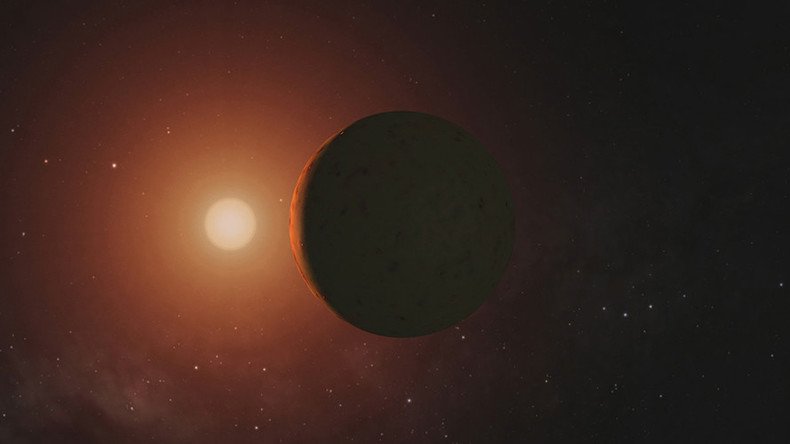NASA offers stunning 360-degree ‘tours’ of newly-discovered exoplanet (VIDEO)

Following the landmark discovery of seven new planets in a solar system around 40 light years away from us, NASA has created a 360-degree simulation to allow people to virtually explore the rocky surface of one of the strange new worlds.
This 360-degree panorama depicts the surface of the newly detected TRAPPIST-1d, which is the third closest planet to the star TRAPPIST-1.
READ MORE: NASA exoplanet discovery ‘is just a beginning’
Virtual visitors can explore an artist’s rendering of the rocky exoplanet’s landscape, by moving the screen on their mobile phone or by scrolling with their mouse.
Take a 360° tour of TRAPPIST-1d, one of the Earth-sized plants in the newly discovered system ~40 light-years away: https://t.co/5mMKpRPcocpic.twitter.com/RRuPiOleOe
— NASA (@NASA) February 22, 2017
The depiction is based on NASA’s data so far on the newly discovered planetary system. TRAPPIST-1 can be seen looming large on the horizon while TRAPPIST-1d’s sister planets can also be seen as bright points in the dark sky. Two crescent-shaped moons are also visible.
Scientists believe that because the exoplanets are clumped together so closely it would be possible to see large geological features on one of the neighboring planets.
‘Exoplanet hop’: #NASA release epic travel poster to mark landmark discovery https://t.co/bMqZKPza8R#spacepic.twitter.com/A8jYp4KD8p
— RT (@RT_com) February 23, 2017
Each of the exoplanets is roughly the same size as Earth both in terms of mass and diameter. It’s not yet known whether any or all of these worlds might be habitable but three of them lie comfortably inside TRAPPIST-1’s “habitable zone,” meaning they are the right distance from the star to allow water to exist in liquid form.
NASA announced the discovery of the exoplanets in a hotly anticipated press conference in Washington, DC on Wednesday.
“This discovery could be a significant piece in the puzzle of finding habitable environments, places that are conducive to life,” Thomas Zurbuchen, of NASA’s Science Mission Directorate, said about their findings in a statement.












